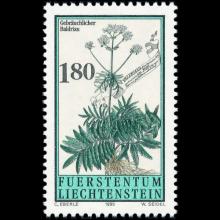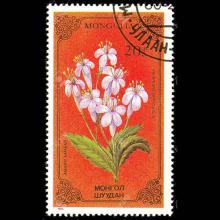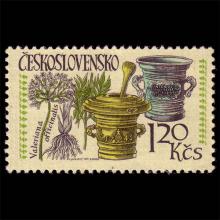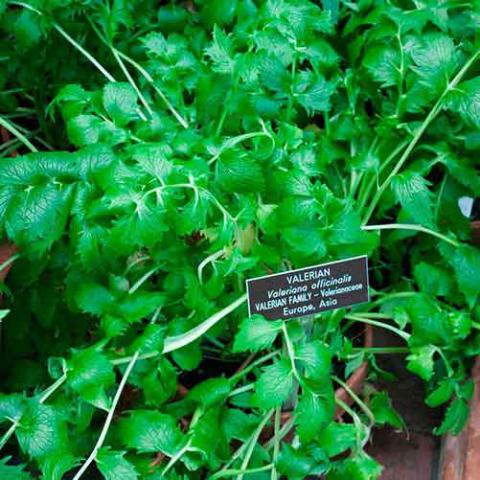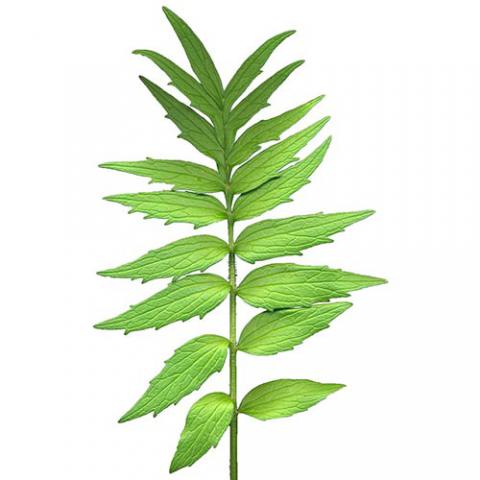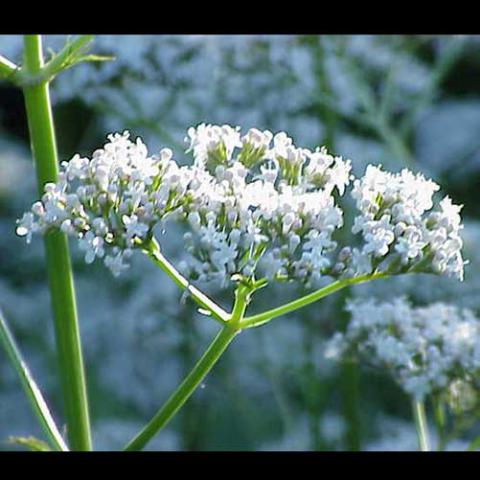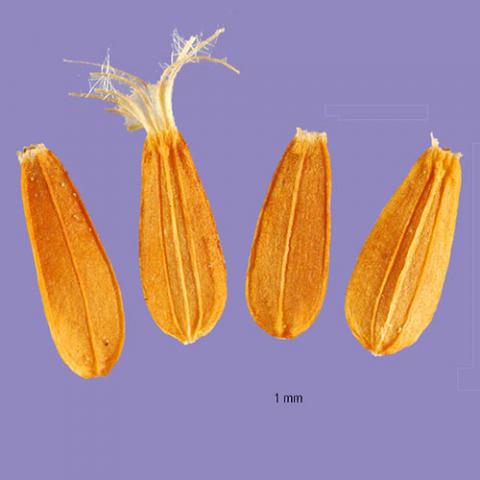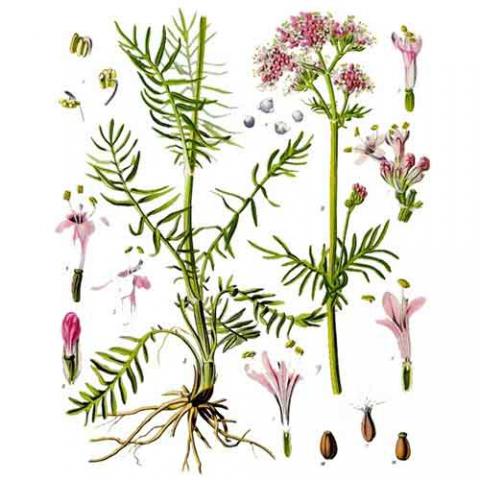NAME(S)
TAXONOMY
PLANTAE ID
THERAPEUTIC
Liechtenstein
Issued:
Stamp:
Valeriana officinalis
Mongolia
Issued:
Stamp:
Valeriana officinalis
Czechoslovakia
Issued:
Stamp:
Valeriana officinalis
Liechtenstein
Issued:
Stamp:
Valeriana officinalis
Mongolia
Issued:
Stamp:
Valeriana officinalis
Czechoslovakia
Issued:
Stamp:
Valeriana officinalis
Liechtenstein
Issued:
Stamp:
Valeriana officinalis
Mongolia
Issued:
Stamp:
Valeriana officinalis
Czechoslovakia
Issued:
Stamp:
Valeriana officinalis
Herb of the Month: Valerian
By Jeffrey Burke, ND, MH, CNC, CHS, July 23, 2020
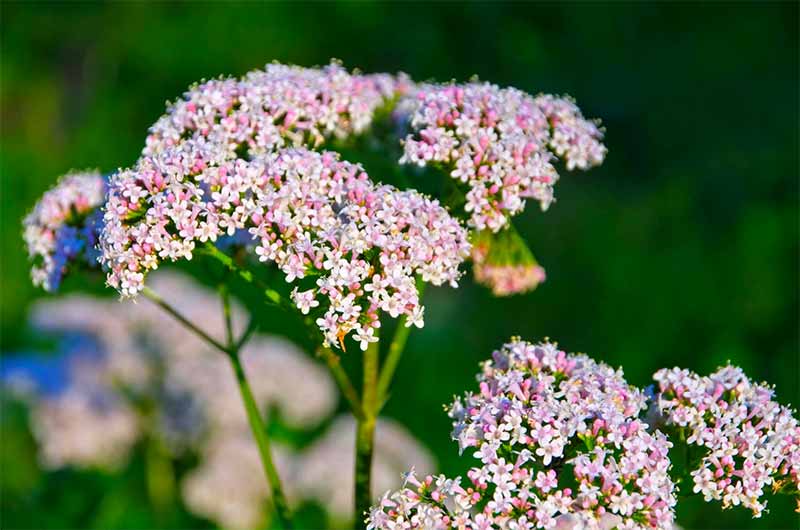
Valerian has been used as a medicinal herb as far back as ancient Rome. It was recommended commonly, and Hippocrates wrote about its many uses. A member of the Valerianaceae* family, valerian is a perennial plant native to Asia and Europe, and the genus includes over 250 species, but in both the U.S. and Europe, the Valerian officinalis genus is the form most often discussed and utilized.
Valerian root has a distinctive smell that many find unpleasant to say the least, but foul smell and all, Valerian root has been used as a medicine for over 2,000 years. Interestingly, centuries ago the sweet-smelling flowers of the Valerian plant were used as perfume.
The herb has an interesting history: In the 16th century, it was used to treat nervousness, headaches and heart palpitations–but in the 19th century, valerian was considered to be a stimulating herb that caused many the problems it previously had been thought to help. And during World War II, Valerian was recommended to help ease the stress of air raids.
Today, valerian root preparations used as in dietary supplements focused on insomnia and quality of sleep, anxiety, and even depression and hormonal imbalances for women. A double-blind study conducted by the Foellinge Health Centre in Sweden found that the effects of Valerian on poor sleep were significant: 44% of the participants reported perfect sleep; 89% reported improved sleep. None of this group reported any side effects, including morning drowsiness.
Consumers have a diverse selection of delivery systems–the roots and underground stems (rhizomes) are used to make liquid tinctures, dried bulk herb tea, dried tea bags, and capsules, and also are used in blended combinations. As we all respond differently to herbs, trying different delivery systems can help consumers decide which one works the best for them.
It is quite interesting to me that after thousands of years of successful use, Valerian root is still not recommended across the board, and is not getting the accolades that it deserves, even with a strong successful history. This may be because knowledge is limited, and possibly that only a few studies have been done on humans, and some of the studies were inconsistent in terms of benefit. And although Valerian root as a supplement has thousands of years of successful use, not everyone may receive the same benefits.
It is known that Valerian is considered safe for healthy adults, though as always people should discuss with their healthcare provided. Children, pregnant and nursing mothers should only use with a medical practitioner’s approval. It is also recommended to avoid use with alcohol or other prescription sedatives. Those on medications for stress, sleep, or anxiety should consult a medical practitioner before using Valerian root.
Reference: wholefoodsmagazine.com
* The Valerianaceae family is now considered part of the Caprifoliaceae family. Wikipedia
Genus species (Plantae): Valeriana officinalis
Valerian (Valeriana officinalis, Caprifoliaceae) is a perennial flowering plant, with heads of sweetly scented pink or white flowers that bloom in the summer. Valerian flower extracts were used as a perfume in the 16th century.
Native to Europe and parts of Asia, valerian has been introduced into North America. The flowers are frequently visited by many fly species, especially hoverflies of the genus Eristalis. It is consumed as food by the larvae of some Lepidoptera (butterfly and moth) species including the grey pug.
Other names used for this plant include garden valerian (to distinguish it from other Valeriana species), garden heliotrope (although not related to Heliotropium), and all-heal (which is also used for plants in the genus Stachys). Red valerian, often grown in gardens, is also sometimes referred to as "valerian", but is a different species (Centranthus ruber) from the same family and not very closely related.
Crude extract of valerian root is sold as a dietary supplement in the form of capsules. Valerian root may have sedative and anxiolytic effects.
The amino acid valine is named after this plant.
History
Valerian has been used as a medicinal herb since at least the time of ancient Greece and Rome. Hippocrates described its properties, and Galen later prescribed it as a remedy for insomnia. In medieval Sweden, it was sometimes placed in the wedding clothes of the groom to ward off the "envy" of the elves. In the 16th century, the Anabaptist reformer Pilgram Marpeck prescribed valerian tea for a sick woman.
Etymology
The name of the herb is derived from the personal name Valeria and the Latin verb valere (to be strong, healthy).
Valerian extract
Biochemical composition
Known compounds detected in valerian that may contribute to its method of action are:
- Alkaloids: actinidine, chatinine, shyanthine, valerianine, and valerine
- Isovaleramide may be created in the extraction process.
- Gamma-aminobutyric acid (GABA)
- Isovaleric acid
- Iridoids, including valepotriates: isovaltrate and valtrate
- Sesquiterpenes (contained in the volatile oil): valerenic acid, hydroxyvalerenic acid and acetoxyvalerenic acid
- Flavanones: hesperidin, 6-methylapigenin, and linarin
Mechanism of action
Because of valerian's historical use as a sedative, antiseptic, anticonvulsant, migraine treatment, and pain reliever, most basic science research has been directed at the interaction of valerian constituents with the GABA receptor. Many studies remain inconclusive and all require clinical validation. The mechanism of action of valerian in general, and as a mild sedative in particular, has not been fully elucidated. However, some of the GABA-analogs, particularly valerenic acids as components of the essential oil along with other semivolatile sesquiterpenoids, generally are believed to have some affinity for the GABAA receptor, a class of receptors on which benzodiazepines are known to act. Valeric acid, which is responsible for the typical odor of mostly older valerian roots, does not have any sedative properties. Valeric acid is related to valproic acid, a widely-prescribed anticonvulsant; valproic acid is a derivative of valeric acid.
Valerian also contains isovaltrate, which has been shown to be an inverse agonist for adenosine A1 receptor sites. This action likely does not contribute to the herb's possible sedative effects, which would be expected from an agonist, rather than an inverse agonist, at this particular binding site. Hydrophilic extractions of the herb commonly sold over the counter, however, probably do not contain significant amounts of isovaltrate. Valerenic acid in valerian stimulates serotonin receptors as a partial agonist.
Preparation
The chief constituent of valerian is a yellowish-green to brownish-yellow oil which is present in the dried root, varying from 0.5 to 2.0%, though an average yield rarely exceeds 0.8%. This variation in quantity is partly explained by location; a dry, stony soil yields a root richer in oil than one that is moist and fertile. The volatile oils that form the active ingredient are extremely pungent, somewhat reminiscent of well-matured cheese. Though some people remain partial to the earthy scent, some may find it to be unpleasant, comparing the odor to that of unwashed feet. Valerian tea should not be prepared with boiling water, as this may drive off the lighter oils.
Medicinal use
Valerian is most often used as an alternative medicine for insomnia in place of hypnotic drugs. It is also sometimes used as an alternative for sedatives, such as benzodiazepines, in the treatment of certain anxiety disorders.
Whether or not valerian is an efficacious treatment for insomnia is still a very open question. Multiple recent systematic reviews of the medical research literature and meta-analyses have produced conflicting conclusions regarding its efficacy. One systematic review and meta-analysis published in 2006 concluded, "The available evidence suggests that valerian might improve sleep quality without producing side effects." An article in the Medical Science Monitor states that, "...based on cellular and animal studies as well as human clinical trials the literature supports a role for these preparations [including valerian root] as useful alternatives in the management of the stress and anxiety of everyday life." However, another systematic review, published in 2007 in the journal Sleep Medicine Reviews, concluded valerian was safe but not clinically efficacious for insomnia.
Regulation
In the United States, valerian extracts are sold as a nutritional supplement under the Dietary Supplement Health and Education Act of 1994.
Oral forms, usage, and adverse effects
Oral forms
Oral forms are available in both standardized and unstandardized forms. Standardized products may be preferable considering the wide variation of the chemicals in the dried root, as noted above. When standardized, it is done so as a percentage of valerenic acid or valeric acid.
Adverse effects
Few adverse events attributable to valerian have been reported. Large doses may result in stomachache, apathy, and a feeling of mental dullness or mild depression. Because of the herb's tranquilizer properties, it may cause dizziness or drowsiness, effects that should be considered before driving or operating heavy or hazardous equipment.
In rare cases, valerian may cause an allergic reaction, typically as a skin rash, hives, or difficulty breathing. This should be treated as a medical emergency.
Because the compounds in valerian produce central nervous system depression, they should not be used with other depressants, such as ethanol, benzodiazepines, barbiturates, opiates, kava, or antihistamine drugs. Moreover, non-pregnant adult human hepatotoxicity has been associated with short-term use (i.e., a few days to several months) of herbal preparations containing valerian and Scutellaria (commonly called skullcap). Withdrawal after long-term use in a male has also been associated with benzodiazepine-like withdrawal symptoms, resulting in cardiac complications and delirium.
The very limited animal and human data do not allow a conclusion as to the safety of valerian during pregnancy. Moreover, as a natural, unregulated product, the concentration, contents, and presence of contaminants in valerian preparations cannot be easily determined. Because of this uncertainty and the potential for cytotoxicity in the fetus and hepatotoxicity in the mother, the product should be avoided during pregnancy.
Effect on other organisms
An unusual feature of valerian is that valerian root and leaves are a cat attractant similar to, and as safe as, catnip. Valerian contains the cat attractant actinidine. Cat attractants might mimic the odor of cat urine, which is caused by 3-mercapto-3-methylbutan-1-ol. Anecdotal reports claim that valerian is also attractive to rats—so much so that it had been used to bait traps. Stories describe the Pied Piper of Hamelin using both his pipes and valerian to attract rats. Research also shows that valerian root is the strongest chemoattractant of slime molds such as Physarum polycephalum.
Floral symmetry
Valerian is unusual in having flowers with "handedness", that is, having neither radial nor bilateral symmetry.
Parts used: Root
Constituents: Volatile oil (camp hene, borneol), sesquiterpene alkaloids (valerenic acid), Iridoid esters (valepotriates), alkaloids (actinidine, valerine, valerianine, chatinine)
Medicinal actions: Nervous system relaxant, hypnotic, hypotensive, anxiolytic, analgesic, antibiotic, expectorant, bitter, carminative, sedative (paradoxical stimulant), antispasmodic, emmenagogue.
Reference:https://pt.wikipedia.org/wiki/Plantas_Medicinais_de_Köhler

